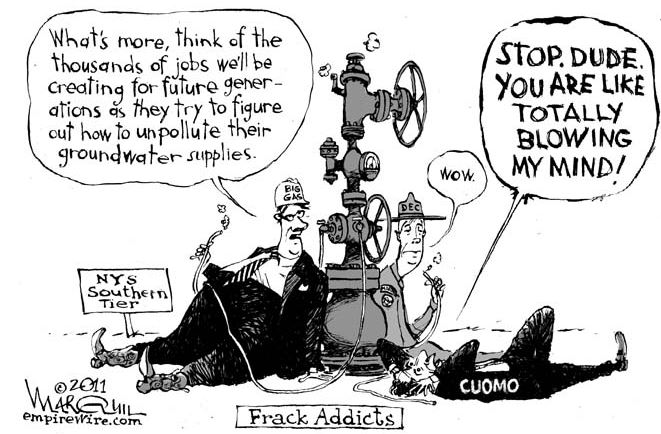Shelby Grace O’Shea@ShelbyGraceOSh2:
The driest areas basically overlap with the boreal. Not concerning at all That plus all the farmland in the pink. Going to be very difficult to grow our food without any water! Local farmers don’t believe in climate change, so that’s cool.
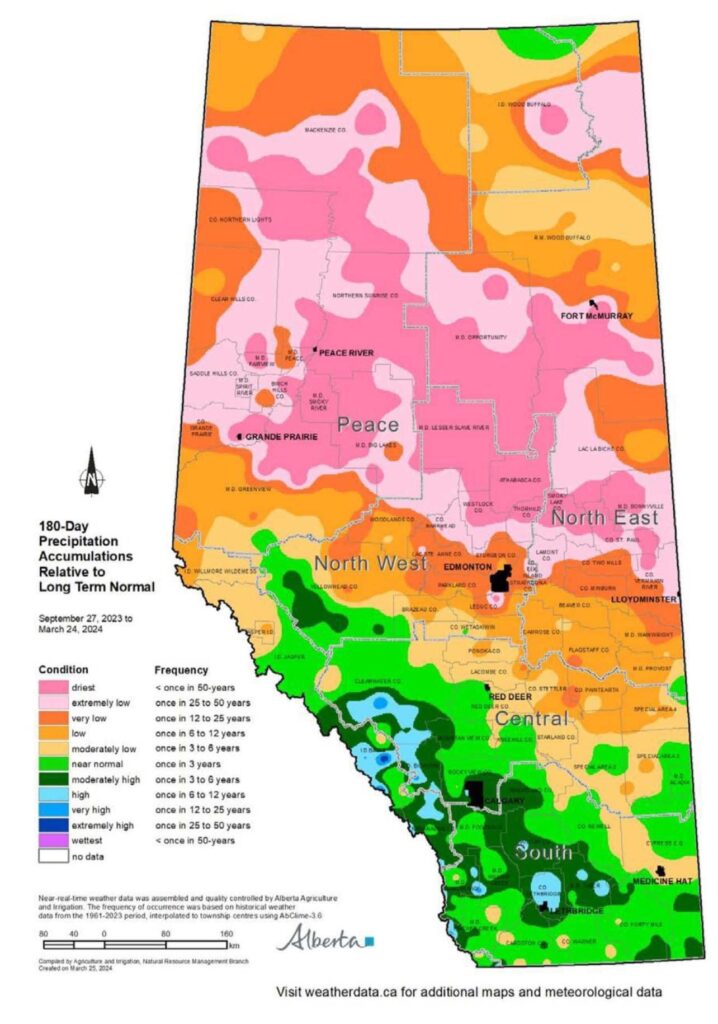
Patricia McDonald@Papaschase2:
The upper left part of the map is already on fire.
Sisu van Hellberta@sisuvanhell:
They’re more scared of wind turbines than the drought.

Leona Jacobs April 4 2024 on Facebook posting of the above, and replies by Renate de Bruijn reporting yet another frac’d Alberta family left contaminated by AER:
It boggles my brain to think that people believe you can take fresh water out of the system, even in a dirty state, and expect more to magically appear to replace that in the (closed loop) hydrological cycle … but to actually use fresh water in this capacity (because it is cheaper than cleaning up the already dirty water) hurts my head. It’s selfish and blinkered and lacks bigger picture thinking. … But that would only be my opinion.
David Leigh:
The water is for the people. NOT the petrochemical companies.
Petroleum industry does not like to use fresh water, it damages the formations.![]() Bullshit. Companies are frac’ing in the fresh water zones, super shallow directly into aquifers, at medium depths and deep. Go to the AER and look up Encana/Ovintiv’s (now Lynx) perf and frac data in the Horse Shoe Canyon
Bullshit. Companies are frac’ing in the fresh water zones, super shallow directly into aquifers, at medium depths and deep. Go to the AER and look up Encana/Ovintiv’s (now Lynx) perf and frac data in the Horse Shoe Canyon![]() We prefer to use salt water as that is the fluid in formations. Fresh water causes the sandstone, shale and limestone to expand thus reducing porosity and permeability.
We prefer to use salt water as that is the fluid in formations. Fresh water causes the sandstone, shale and limestone to expand thus reducing porosity and permeability.
Cindy Cadrain:
Pat Matsalla so all the water they are pumping out of the creeks they add salt to it??
Pat Matsalla if this is true, then why does the industry use and pollute billions of liters of fresh water in Alberta every year?
Pat Matsalla Since they are often working a long way from natural sakt water, I assume that the secret patented formula of additives makes the water salty before it goes deep into the ground forever?
Michael Sullivan:
Pat Matsalla that’s not true of the shale fracking industry. They almost always use surface water. It’s cheaper and easier to mix chemicals (gellants)
Renate de Bruijn:
Michael Sullivan Do the gellants look anything like what is at the surface of this water in our sink? We have an oil and gas lease at 185 metres from our water well. After they showed up this is the water we are left with.

Michael Sullivan:
Ew, that’s gross! Could be. The gellants are always slippery to the touch.![]() After Encana/Ovintiv illegally frac’d directly into my community’s drinking water aquifers, contaminating my water well, the Hamlet’s of Rosebud municipal wells and many other citizen wells, my water was slippery to the touch. I didn’t find out Encana broke the law and contaminated our water til about a year later. AER violated my charter rights and engaged in fraud to help Encana get away with it.
After Encana/Ovintiv illegally frac’d directly into my community’s drinking water aquifers, contaminating my water well, the Hamlet’s of Rosebud municipal wells and many other citizen wells, my water was slippery to the touch. I didn’t find out Encana broke the law and contaminated our water til about a year later. AER violated my charter rights and engaged in fraud to help Encana get away with it.![]() They often add them as friction reducers. I’d get a sample in a clean glass bottle for sure. Chemical analysis should be definitive. Not sure who could analyze it for you, but I’d start with the AER. They are supposed to protect the public, but the last few years of conservative governments have gutted their staff, so less effective than they used to be. Good luck.
They often add them as friction reducers. I’d get a sample in a clean glass bottle for sure. Chemical analysis should be definitive. Not sure who could analyze it for you, but I’d start with the AER. They are supposed to protect the public, but the last few years of conservative governments have gutted their staff, so less effective than they used to be. Good luck.![]() From what I’ve heard, AER has never served the public, only polluters.
From what I’ve heard, AER has never served the public, only polluters.![]()
I should add that there are about three layers of safeguards to prevent water well contamination, so should be super unlikely, but if the operator is a fly by night company,![]() Like Encana?
Like Encana?![]() there might have been corners cut. If there is a problem, there would be pressure on the surface casing vent, so you could ask them to check for that specifically, and maybe witness the test (very simple, just hook up a pressure gauge)
there might have been corners cut. If there is a problem, there would be pressure on the surface casing vent, so you could ask them to check for that specifically, and maybe witness the test (very simple, just hook up a pressure gauge)
Renate de Bruijn:
Michael Sullivan thanks for your reply. We had the water analyzed but the AER has prematurely closed our file due to insufficient evidence that the “gel” is indeed from the lease next door. ![]() So nasty! AER did the very same to so many frac harmed Albertans, including Ann Craft and the Campbells (see their water below)
So nasty! AER did the very same to so many frac harmed Albertans, including Ann Craft and the Campbells (see their water below)![]() The company has lost complete circulation twice in the aquifer during drilling. At 36 metres and 52 metres. The perforations in the casing of our water well are from 137 – 147 ft.
The company has lost complete circulation twice in the aquifer during drilling. At 36 metres and 52 metres. The perforations in the casing of our water well are from 137 – 147 ft.
Both wells seem to communicate with each other.
We are hoping for more evidence in the near future. In the meantime it’s frightening to think about how the industry is allowed to negatively impact fresh water sources that should be available to all Canadians.
Again, thanks for your suggestions. It’s appreciated.
![]() Ms. de Bruijn’s water looks like this family’s frac’d drinking water NW of Calgary:
Ms. de Bruijn’s water looks like this family’s frac’d drinking water NW of Calgary:![]()
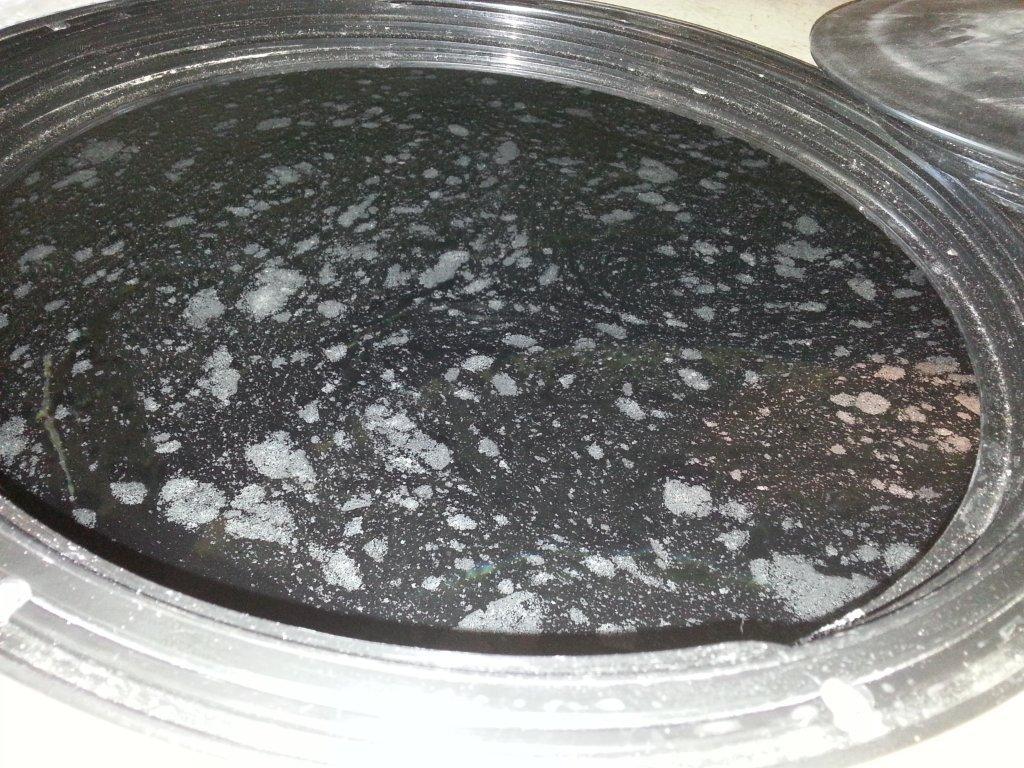
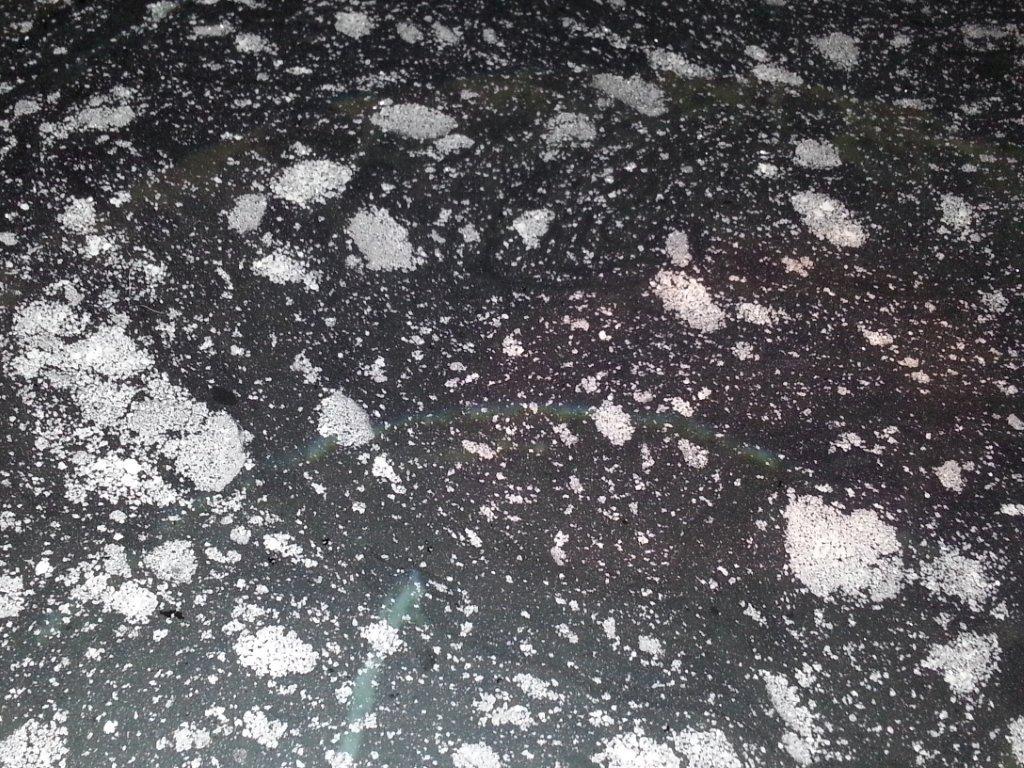
Drought poses key risk to Canada’s natural gas producers in 2024: Deloitte by Amanda Stephenson, The Canadian Press, Apr 03, 2024, Edmonton Journal
CALGARY – Persistent drought conditions are poised to challenge natural gas producers even as they aim to ramp up in anticipation of Canada’s first liquefied natural gas export terminal opening, a new report warns.
The report by Deloitte Canada identifies potential water shortages in Western Canada as a key risk facing the oil and gas sector in 2024.
Some of the most extreme drought conditions currently are in northeast B.C. and northwest Alberta, a region that is the epicentre of Canada’s natural gas drilling industry.![]() There is a God after all.
There is a God after all.![]()
The report notes Alberta’s government has already set up a drought advisory panel to begin water usage negotiations![]() Translation: How do we give all Alberta’s water to the frac’ers and their enablers in UCP and their evangelical handlers, the TBA, leaving a drop or two for agriculture and Albertans?
Translation: How do we give all Alberta’s water to the frac’ers and their enablers in UCP and their evangelical handlers, the TBA, leaving a drop or two for agriculture and Albertans?![]() , while B.C. Premier David Eby has called his province’s situation “the most dramatic drought conditions that we’ve seen.”
, while B.C. Premier David Eby has called his province’s situation “the most dramatic drought conditions that we’ve seen.”
Water use is important for the natural gas industry — most development in Canada today involves hydraulic fracturing, a process that uses a combination of water, sand and chemicals to develop pathways to bring the gas to the surface.![]() Stupidest “brute force and ignorant” human invention ever.
Stupidest “brute force and ignorant” human invention ever.![]()
And the drought comes as the industry anticipates increased demand for natural gas, coinciding with the expected opening sometime next year of the LNG Canada facility in Kitimat, B.C.
“It is really interesting to see, because this is the moment the natural gas industry has been waiting for 10 years, and we’ve now got another complication,” said Andrew Botterill, national oil, gas and chemicals leader at Deloitte Canada.![]() Yup, God’s on it.
Yup, God’s on it.![]()
The $40-billion LNG Canada ![]() Massive waste of money; Liquid UnNatural Gas will be humanity’s TRex
Massive waste of money; Liquid UnNatural Gas will be humanity’s TRex![]() project will ship liquefied natural gas overseas and open up Asian markets to Canadian natural gas for the first time.
project will ship liquefied natural gas overseas and open up Asian markets to Canadian natural gas for the first time.
Much of the $5 billion in capital spending projected to take place in B.C. by oil and gas producers in 2024, according to the Canadian Association of Petroleum Producers, will be driven by natural gas drilling to supply LNG Canada as the project’s completion date draws closer.
“I still think companies, especially those who have committed to putting gas volumes into a very expensive LNG plant that’s been built, will meet all of those requirements … It’s just going to be harder work and probably will mean some extra costs around water management,” ![]() Water hoarding and theft from the commons and other species is what he really means but doesn’t have the courage or integrity to say
Water hoarding and theft from the commons and other species is what he really means but doesn’t have the courage or integrity to say![]() Botterill said.
Botterill said.
In December, the Alberta Energy Regulator warned the oil and gas industry that they could face restricted access to water in the event of severe drought in 2024. The provincial government has already launched negotiations aimed at trying to get major users to reach water-sharing agreements.
Meanwhile, the B.C. Energy Regulator has provided advance warning of the potential for water restrictions for industrial water licence holders if conditions deteriorate.
Botterill said as restrictions come into place, gas developers will need to explore increased use of alternative water sources. Using recycled water — which means treating and reusing previously used fracking fluid — is an option, but is typically more expensive and more technically complicated than using fresh water.![]() National Energy Board (now CER) published a frac impact report in 2009 stating that companies do not like to recycle frac water because it’s too expensive to try to treat and corrosive to well casings, and other infrastructure. It can be radioactive and harmful to worker health and safety, not that the frac industry ever gave or gives a shit about its workers.
National Energy Board (now CER) published a frac impact report in 2009 stating that companies do not like to recycle frac water because it’s too expensive to try to treat and corrosive to well casings, and other infrastructure. It can be radioactive and harmful to worker health and safety, not that the frac industry ever gave or gives a shit about its workers.![]()
In 2022, according to the Alberta Energy Regulator, just over one per cent of the water used by hydraulic fracturing operations was recycled water, with the remaining 99 per cent being primarily fresh water.
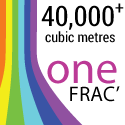
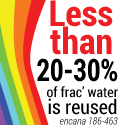

Above images by Barb Ryan, Fox Creek, Frac ‘n Quake Central Alberta
“I think we’re going to see companies be able to manage, but there’s going to be a lot more work that goes into it,” Botterill said.
“I see it as an expense and a complication to operations.”
No water, no oil: How the parched western provinces could hamper the oilpatch, Water shortages could have devastating effect on oil and gas sector, says new report by Kyle Bakx, Apr 3, 2024, CBC News
Persistent and severe drought conditions across Western Canada could have a devastating effect on the oil and natural gas sector, which has drilling operations in some of the driest areas, according to a new report by Deloitte.
Limited water supply could have significant effects on the production of oil and gas, the report warns, and the timing couldn’t be worse for the industry as many companies are wanting to increase production and drilling with new export pipelines and facilities nearing completion.![]() Ya, well, I’d like to have more than one shower a week, and wash my floors more often than once a year, but hauling water is too exhausting and expensive
Ya, well, I’d like to have more than one shower a week, and wash my floors more often than once a year, but hauling water is too exhausting and expensive![]()
The past several years have been parched in parts of Western Canada, but there is extra concern this year because of the below average snowpack in the mountains.
“It’s not going to be as simple to just pipe fresh water in. You may need to move it and truck it to different locations,” said Andrew Botterill, an energy analyst with Deloitte Canada, in an interview with CBC News.
In B.C., the provincial energy regulator has warned snowpack levels were only 72 per cent of the historical average.
Trucking in water and recycling water will both result in more “expensive and complicated” operations for companies, he said.![]() What about families? Farms? Wildlife? FFS!
What about families? Farms? Wildlife? FFS!![]()
Many communities are already on high alert about a devastating drought and possible impacts on drinking water and availability for industries, such as agriculture.
It’s the fourth year of drought conditions and regulators have warned industry about potential water restrictions this summer. The amount of water used to produce oil and gas can vary, with drilling activity in some regions using up to 10 times more water compared to other areas, depending on geological factors, according to the Alberta Energy Regulator.
- Balmy temperates, robust production sink natural gas prices
- Canada is still backing the fossil fuel industry with billions, report finds
The regulator is already restricting how much water oilsands and other energy projects can withdraw from part of the Athabasca River and other rivers in the province. Some communities have also banned the oilpatch from using municipal water. ![]() Ya, but, some of those have declared they will ignore the ban, and keep letting industry have all the water they want. Idiots.
Ya, but, some of those have declared they will ignore the ban, and keep letting industry have all the water they want. Idiots.![]()
“The allocation of water is going to be an increasingly important issue,” said federal Natural Resources Minister Jonathan Wilkinson. “The long-term impacts of climate change mean that this is going to be a continuing challenge that we are going to have to engage.”
Water is used for drilling and for fracking ![]() And enhanced oil recovery, and four barrels of water are contaminated for every barrel of bitumen produced. Super idiotic.
And enhanced oil recovery, and four barrels of water are contaminated for every barrel of bitumen produced. Super idiotic.![]() — a common technique where a high-pressure mixture of water, sand and chemicals are injected into an underground rock formation to create cracks and access oil and natural gas. Using recycled water can impact the effectiveness of drilling, which can increase costs.
— a common technique where a high-pressure mixture of water, sand and chemicals are injected into an underground rock formation to create cracks and access oil and natural gas. Using recycled water can impact the effectiveness of drilling, which can increase costs.
Currently, oil prices remain above average compared to the last decade, but natural gas prices are depressed. That’s why drought conditions could have a bigger impact on production of natural gas.
“When you combine the fact that there may be areas where water is scarce together with the fact that gas prices are low, the appropriate thing to do is to not force the issue and try to deliver more production with a higher cost,” said Mike Belenkie, CEO of Advantage Energy, a mid-sized company producing mainly natural gas.
Belenkie has kept a close watch on precipitation levels throughout the winter, not only because of the water shortage but the increased risk of wildfires, too.
“The bigger concern really is about fires,” he said. “It was an awful year for forest fires last year and it doesn’t look like it’s going to be any better this year.”![]() How much of the wildfires are spurred on by the oil and gas industry’s frac’s leaking gases to surface via soils outside their casings, and via casing leaks?
How much of the wildfires are spurred on by the oil and gas industry’s frac’s leaking gases to surface via soils outside their casings, and via casing leaks?![]()
More than 100 fires are still burning in B.C. and Alberta after unusually dry conditions in both provinces. Last year, approximately 15 million hectares burned across the country, over seven times the historic national annual average.
For the first time in two decades, the Alberta government has opened water-sharing negotiations among licence-holders, including the energy and agricultural sectors, with the aim of reducing water use.![]() What? Greedy oil and gas companies reduce their water use? It’ll never happen until humans are wiped off or burned off the planet, and our “regulators” and politicians are too corrupt and cowardly to do what needs to be done: Criminalize frac’ing.
What? Greedy oil and gas companies reduce their water use? It’ll never happen until humans are wiped off or burned off the planet, and our “regulators” and politicians are too corrupt and cowardly to do what needs to be done: Criminalize frac’ing.![]()
“Oil and natural gas companies are actively increasing use of alternative water sources such as low-quality groundwater, municipal wastewater, and recycled produced water to reduce fresh water needs,” ![]() None of those half-assed measures will mitigate the problem. Most water injected to frac is lost forever from the hydrogeological cycle, and industry and CAPP damn well know it.
None of those half-assed measures will mitigate the problem. Most water injected to frac is lost forever from the hydrogeological cycle, and industry and CAPP damn well know it.![]() said Richard Wong, vice president of regulatory and operations with the Canadian Association of Petroleum Producers, in an emailed statement.
said Richard Wong, vice president of regulatory and operations with the Canadian Association of Petroleum Producers, in an emailed statement.
The industry group is working with the Alberta government to consider “low-risk inter-basin water transfers![]() bad bad bad idea
bad bad bad idea![]() to alleviate pressure on water-stressed areas,” said Wong.
to alleviate pressure on water-stressed areas,” said Wong.
At the COP28 UN climate summit last year, countries around the world agreed to transition away from fossil fuels in order to limit global warming.
Climate change will profoundly affect the country’s water supply as summers grow hotter and winters shorter, experts say. While precipitation is predicted to increase overall, so will the duration and severity of droughts.![]() And all industry and Alberta govt can salivate over, is more more more more frac’ing. Idiots.
And all industry and Alberta govt can salivate over, is more more more more frac’ing. Idiots.![]()
A pipeline to send water to southern Alberta? Ideas float to the surface in times of drought, Irrigation districts have raised interbasin diversion as an option amid consultations by Joel Dryden, CBC News, Apr 02, 2024
![]() Another empty water pipeline? The north is burning up and in extreme drought conditions too! Map below of 180-day precipitation accumulations relative to long term normal, Sept 27, 2003 to March 24, 2024
Another empty water pipeline? The north is burning up and in extreme drought conditions too! Map below of 180-day precipitation accumulations relative to long term normal, Sept 27, 2003 to March 24, 2024![]()

Last year, as the Oldman Reservoir dropped to a level not seen since 2001, the Municipal District of Pincher Creek was forced to take action.
Water levels dropped so low that the M.D.’s intakes within the reservoir — which sit above the historic bed of the Crowsnest River — were exposed. They could no longer draw water.
The M.D. was forced to haul water into the community on trucks, at a cost of roughly $7,500 per day.
Eventually, the municipal district amended a temporary water licence to pump water near its existing intakes. And while the M.D. is still hauling potable water daily, the set-up covers about 75 per cent of its water and saves about $3,000 a day.
As Alberta stares down the possibility of a severe drought, Pincher Creek may not be alone this year in adapting to unforeseen challenges tied to water access.
With such conditions looming, Alberta Environment Minister Rebecca Schulz said irrigation districts have raised the possibility of “interbasin diversion” often in recent months — referring to the transfer of water from one major river basin to another.
“It’s one of the ideas that’s been brought forward in terms of one of the ways we can meet those needs, especially in southern Alberta, with water from other basins. This is something we could look at,” she said March 13.![]() As criminal and stupid an idea as frac’ing.
As criminal and stupid an idea as frac’ing.![]()
More than 80 per cent of Alberta’s water supply is found in the northern half of the province, but 80 per cent of the province’s demand is in the south.

Water diversion — redirecting water for various purposes, whether they be municipal, industrial or otherwise — takes place often within sub-basins in the province (the South Saskatchewan River Basin, for example, contains four sub-basins).
For instance, the Lethbridge Northern Irrigation District and the St. Mary River Irrigation District have very large diversions out of the river into the main canal system, noted Shannon Frank, executive director of the Oldman Watershed Council.
Interbasin diversions, on the other hand, are rare. But such ideas are often raised in times of drought, Frank said.
“That is something we hear occasionally, people saying, ‘Well, why can’t we build a pipeline from a bigger river? Like, the North [Saskatchewan] or the Athabasca? These are huge, much larger rivers than we have,'” Frank said. “Realistically, a big part of the reason is cost.”
A small number of interbasin diversions have occurred in Alberta, but the province noted in an email to CBC News that such projects have been done on a local basis only and have been limited to emergencies.
No matter how much water is involved, transfers have to be approved by the legislature by passing a special act to authorize the licence, according to Alberta’s Water Act.![]() Frac’ers and bitumen companies violate the Water Act likely daily and have done for decades contaminating water for many Albertans, including me
Frac’ers and bitumen companies violate the Water Act likely daily and have done for decades contaminating water for many Albertans, including me![]()
Such diversions bring with them various concerns tied to water chemistry, invasive species and Alberta’s water allocation commitments with surrounding jurisdictions.
Significant demands on water in the south
To understand why such an idea is on the table, consider the South Saskatchewan River Basin (SSRB). The Bow, Oldman and South Saskatchewan sub-basins located within the SSRB have all been closed to new surface water allocations since 2006.
The SSRB flows across the Alberta-Saskatchewan border and serves the water needs of four large Alberta cities: Red Deer, Calgary, Lethbridge and Medicine Hat. Population and economic growth means increased demand on an already-taxed water supply.
And those growing population centres raise concerns for people like David Cox, reeve of the Municipal District of Pincher Creek.
“I think we could probably outpace our supply. And I don’t think that’s the short-term. But when you get a drought like this, it gives you a real reality check,” Cox said.
Irrigation is a major user of the province’s water supply. Alberta has the largest irrigated area in Canada, reaching about 690,000 hectares in the province. Of that, 566,000 hectares are in southern Alberta along the SSRB.![]() But irrigation and municipal/family and farm use does not remove water permanently from the hydrogeological cycle like frac’ing does.
But irrigation and municipal/family and farm use does not remove water permanently from the hydrogeological cycle like frac’ing does.![]()
Four sub-basins make up the SSRB, three of which are the subject of what the provincial government has called “unprecedented” water-sharing negotiations. Results from those negotiations were due to wrap up at the end of March. That deadline was extended to mid-April by Schulz last week.
Given the demands on the province’s water supply in the south, the idea of interbasin diversion could be on the table, said Tricia Stadnyk, a professor and Canada Research Chair in hydrologic modelling with the University of Calgary’s Schulich School of Engineering.
“If we look at drought as a scenario that is going to become more common in this province and across the Canadian Prairies, then what do we do as a long-term mitigation measure?” Stadnyk said.
“When we start talking about diversion, of course, more permanent solutions start to rise to the surface in terms of things to consider. And that becomes very tricky for a number of reasons … I really caution Alberta to do its due diligence.“![]() Alberta never bothered doing due diligence before, why start now?
Alberta never bothered doing due diligence before, why start now?![]()
Water chemistry, invasive species, water sharing
In such a scenario, it would be important to keep in mind that such diversions change the water type, because the water source is changed.
“The specific water chemistry has a lot to do with the ecology that is supported by that watershed, and that water system,” Stadnyk said.
“Right down from the temperature of the water that affects the ability of fish to spawn, to the aquatic biota that can live within that water because of sensitivities to pH and other aspects of water quality.”
It also becomes a big issue for invasive species, something that has been seen across the Great Lakes and other jurisdictions, Stadnyk said.
She cited diversions that took place upstream of Lake Winnipeg that, in addition to equipment and boats being transported from and to different waterways, likely led to the introduction of zebra mussels into the large Manitoba lake.
“That’s really tragic … [it] had remained, up until a few years ago, unimpacted significantly by zebra mussels,” she said. “Once you have them, they’re incredibly difficult to get rid of.”
Zebra mussels are considered a significant threat to Alberta’s aquatic ecosystems but aren’t currently found in the province, according to the provincial government. If a mussel infestation took place in the province, the government estimates a total cost of $75 million annually to protect and replace water-operated infrastructure.
In Alberta, the concern would more likely be the spread of whirling disease, according to Stadnyk. The disease is caused by a parasite that affects fish, and in particular trout. It affects the nervous system, causing them to spin in a distinctive “whirling” behaviour. The mortality rate of young fish with the disease is up to 90 per cent.
Stadnyk said in the scenario of interbasin diversion, it also would be important to be cognizant of drought conditions that are developing in the north.
“We want to be careful not to put another system into a state of crisis just for the sake of supporting a system further south,” she said.
With irrigation districts often raising interbasin diversions as a possible option, Schulz said during her March 13 news conference that the province would need to ensure it was keeping such matters in mind.
“We’d want to, obviously, I think do our work to make sure that we’re not impacting the current allocation commitments that we have in terms of the flow-through of water that we’re expected to pass through, whether that be to Saskatchewan, to the Northwest Territories or to Montana. ![]() UCP prepping to give USA our water? They’ve been after our water for years, and Danielle Smith has made it clear she does not serve or give a shit about Albertans, rather she serves the GOP Repuglicans.
UCP prepping to give USA our water? They’ve been after our water for years, and Danielle Smith has made it clear she does not serve or give a shit about Albertans, rather she serves the GOP Repuglicans.![]() So that would be one of the things we’d have to look at,” she said.
So that would be one of the things we’d have to look at,” she said.
Schulz said the other thing to consider would be impacts to aquatic life, including effects on the species that live in those basins.
“But it is something that is raised, it’s been raised on both of the tele-townhalls that we’ve had, as one of the solutions,” Schulz said.
“More work needs to be done on that before we could say what that might look like, but it is something that has been raised, quite a bit I would say, often the last weeks and months.”
In a statement sent to CBC News, Ryan Fournier, a spokesperson to Schulz, wrote that a number of environmental, economic and social factors would need to be considered before expanding the use of interbasin transfers.
“This includes impacts to local communities, environmental impact of water and biodiversity being moved, and the costs/feasibility of creating infrastructure to enable such a transfer,” Fournier wrote.
![]() I can see the plan now: Make Albertans pay for water pipelines from the north to the south; demand a billion dollars from Trudeau to make all Canadians pay for it too, then, pipeline water from north to south, ignore all the concerns raised about, and give the water exclusively to frac’ers, then, to the USA. And when Albertans start screaming because they have no water to bathe in, blame Trudeau (see more of that blame below).
I can see the plan now: Make Albertans pay for water pipelines from the north to the south; demand a billion dollars from Trudeau to make all Canadians pay for it too, then, pipeline water from north to south, ignore all the concerns raised about, and give the water exclusively to frac’ers, then, to the USA. And when Albertans start screaming because they have no water to bathe in, blame Trudeau (see more of that blame below).![]()
“We will be taking a hard look at all options, including interbasin transfers, to maximize our water supply in the years ahead.”![]() This is bad bad bad. I fully expect this interbasin transfer plan to include BC Site C dam (the $billions in cost of which is paid for by the citizenry, not frac’ers, or the LNG industry, and has little to do with providing electricity to citizens and more do to with hoarding water for frac’ers and providing them free electricity for their insane wasteful polluting Liquid Unnatural Gas – that must be frac’d, permanently removing water from the hydrgeological cycle). Old gas lines will be converted to water pipelines to bring BC’s norther water to USA too, via Alberta’s interbasin transfer plan. Bad Bad Bad. USA will never be satisfied with some of our water, soon as they get their mitts on a bit of it, say in some emergency like now, they’ll suck it all up, fast.
This is bad bad bad. I fully expect this interbasin transfer plan to include BC Site C dam (the $billions in cost of which is paid for by the citizenry, not frac’ers, or the LNG industry, and has little to do with providing electricity to citizens and more do to with hoarding water for frac’ers and providing them free electricity for their insane wasteful polluting Liquid Unnatural Gas – that must be frac’d, permanently removing water from the hydrgeological cycle). Old gas lines will be converted to water pipelines to bring BC’s norther water to USA too, via Alberta’s interbasin transfer plan. Bad Bad Bad. USA will never be satisfied with some of our water, soon as they get their mitts on a bit of it, say in some emergency like now, they’ll suck it all up, fast.![]()
Drought situation a growing concern by Leave it to Beeber, managing editor, Lethbridge Herald, March 22, 2024.
Are we going to finally get the moisture that helps to avert a water crisis in southern Alberta?
If the forecast holds true, we should be getting a substantial amount of snow through the weekend to help alleviate a potential disaster for spring if we start the second consecutive year of drought.
Well before dawn yesterday when I laid out this column, the snow had started falling heavily and by the time you read this, hopefully the foothills, mountains and near-empty reservoirs will be getting a pile of it.
And as much as we all want spring temperatures, the reality is we need moisture more and we should all be willing to sacrifice some early tanning time to avert a crisis.
I personally am extremely worried about the water situation. We live in an arid area where water can’t be taken for granted.
When I was the Homes editor years ago I started practising xeriscaping at my first house on Stafford Drive North to reduce the need for regular watering.
I dug up the grass – by hand – on the front lawn and planted low spreading junipers after laying down landscape fabric and gravel. In the early 1990s, xeriscaping wasn’t a term we heard about often but I’d gotten wind of it and did a huge feature story for the paper on the subject. I also did stories on underground sprinkler systems and their benefits which include using less water than traditional sprinklers. And I thank Greg Weadick for all the help he gave me in coming up with those stories, Greg who was one of my go-to sources when I was doing home and garden stuff.
And as a person who was developing an interest in gardening, I put my education the subject to work.
When I drive by the old Stafford Drive house occasionally, I see my efforts are still there with the front yard of that home totally obscured by evergreens.
Being a westsider since 1996 in an area that was relatively new at the time, I’ve had to contend with the impact of heat and sun on the yard. With a corner lot, I’ve got a huge amount of lawn which I’m inclined to get rid of if I can figure out a way to do so that won’t destroy the street appeal and lower the value of my home.
Like others in the neighbourhood, I’ve done my effort to shade the house and yard by planting trees – the back fence which is lined with Swedish columnars which provide a fantastic wind break and when the leaves are out, a decent amount of shade at certain times of day, as well.
But like everyone I can do more and since last summer when voluntary water restrictions were first announced, I’ve gone out of my way to reduce personal water consumption.
I seldom wash my vehicle![]() I haven’t washed mine in years. I can’t emotionally handle such a flagrant waste of water, living frac’d by Encana and forced to haul water has turned me off vehicle washing – they don’t need it
I haven’t washed mine in years. I can’t emotionally handle such a flagrant waste of water, living frac’d by Encana and forced to haul water has turned me off vehicle washing – they don’t need it![]() , which a neighbour jokingly texted me about last weekend, I try to use less water when doing basic personal hygiene like turning off the water while brushing teeth, and shaving and only spending a few seconds under the shower.
, which a neighbour jokingly texted me about last weekend, I try to use less water when doing basic personal hygiene like turning off the water while brushing teeth, and shaving and only spending a few seconds under the shower.
I’ve got low-flow toilets and a water-miser washing machine which uses only the minimum needed amount to wash clothes. When the dishwasher is used, most times it does the quick cycle.
Small efforts like these – if practised on a large scale – could help reduce the amount of water we in the city consume.
But as we know, city residents aren’t the biggest consumers of southern Alberta’s water resource – agriculture is.
And we desperately need snow or rain to fill up the horribly low reservoirs so there will be enough water for everyone’s needs if we endure another summer of drought.
Those who dismiss the dire situation we are in by saying weather patterns change and climate change has always happened, need to take a serious look at the impact mankind is having on the planet with all the carbon emissions, the destruction of our forests and of course, now the potential impact again on water resources with proposed coal mining in the nearby Rockies.
These are problems – not just here in Alberta and Canada but around the world where there are far greater polluters than here. Yet the prime minister of Canada on April 1 is determined to raise the carbon tax that we pay, adding more stress on financially challenged Canadians.![]() Fucking bullshit! Ordinary, financially struggling Canadians get more money back than we pay!
Fucking bullshit! Ordinary, financially struggling Canadians get more money back than we pay!![]() Which is also problematic in an era of inflation and higher taxes.
Which is also problematic in an era of inflation and higher taxes.
Like climate change deniers, Justin Trudeau needs to take a look at the bigger picture and instead of preaching to the Canadian choir about the need to reduce emissions, the prime minister should get on his pulpit on the global stage and urge the bigger industrial nations – including our neighbour to the south – to do the same.![]() More bullshit! Many countries, including the always blamed China are leaping far ahead of us, in their pollution reductions, and advancements in solar, wind, and other energies. And what’s Take Alberta Back into the Cave doing? Essentially banning solar and wind by putting insane restrictions on them, while letting oil, gas, bitumen, coal and frac do as they like.
More bullshit! Many countries, including the always blamed China are leaping far ahead of us, in their pollution reductions, and advancements in solar, wind, and other energies. And what’s Take Alberta Back into the Cave doing? Essentially banning solar and wind by putting insane restrictions on them, while letting oil, gas, bitumen, coal and frac do as they like.
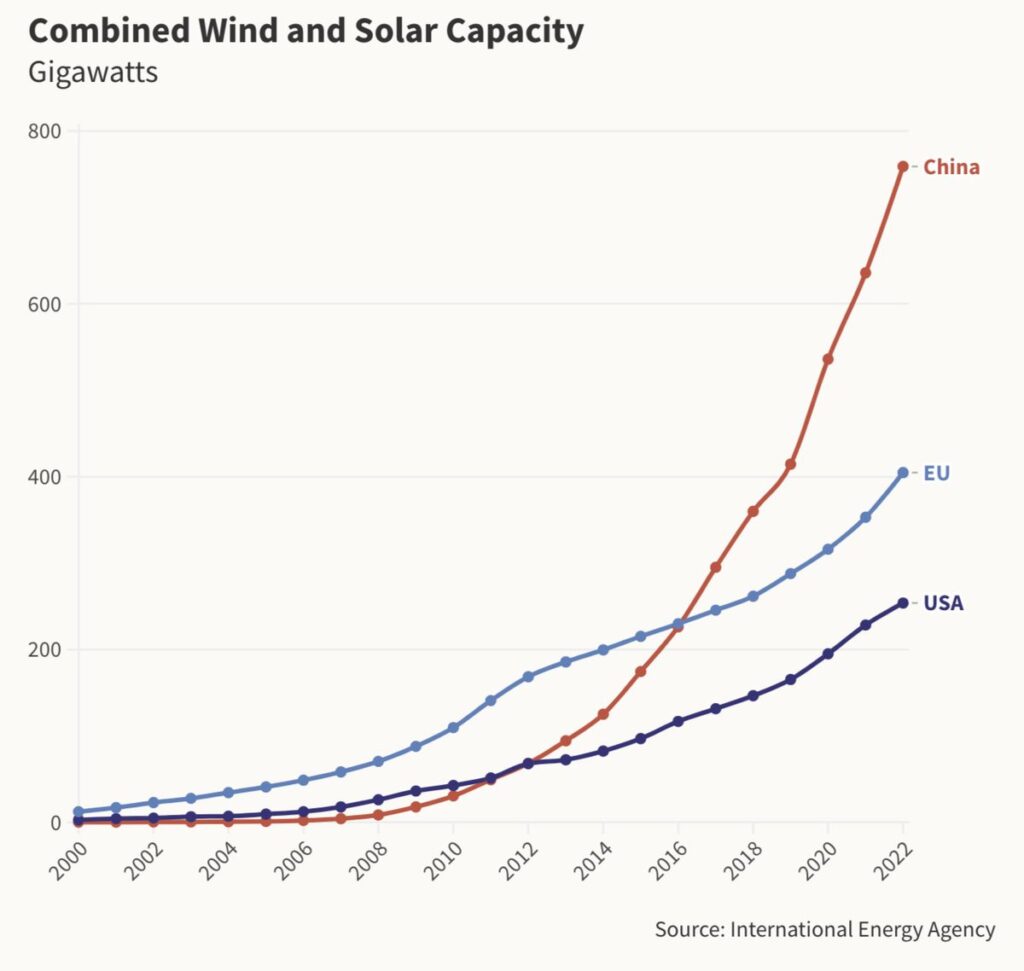
China is producing the most amazing EV, which I would buy in a flash, but I know we’ll never be allowed this fabulous economical EV because the oil industry controls our vehicles here.![]()

China’s new Cherry EV, selling for $5000 US.
Can you imagine the Fucker Truckers seeing me drive by in this delightful EV?![]()
They need to be his target audience, not we Canadians who know what needs to be done. We Canadians who Trudeau increasingly seems to disrespect. Trudeau who bizarrely says it’s not his job to be popular.
Trudeau who comes across like he’s dying on the flag for the sins – real or imagined – of Canadians, with his righteousness on issues that are increasingly angering voters.
We are just one small minnow in a pond of bigger fish and we’re not the biggest consumers in that pond. Trudeau needs to realize that.
He needs to focus his energies trying to convince other countries to do their part to address climate change.
He needs to begin some reconciliation of his own with Canadian taxpayers!
For much of my life I voted Liberal – I learned an enormous amount about politics and leadership from John Reid and Pat Reid, the Liberal MP and MPPrespectively who were from Fort Frances, two genuine statesmen who respected Canadians.
I do not see that same respect from the leader of this country, a member of that same party.
We Canadians suffer like everyone else from the disrespect of our planet by countries around the globe.
We are seeing the impact of that with our dire water situation, the climate change that has affected our province which realistically isn’t entirely due to the behaviours of Canadian residents or industry, the operative word being “entirely.”![]() This dribble is pathetic. This piece started out so well, only to end with the usual Alberta Trudeau bashing, which helps no one. We in Alberta are solely to blame for the shit happening to our climate, forests, water, and extremely toxic oil and gas industry pollution fouling everything. Trudeau is working towards solutions while the industry and greedy ass Alberta just want to pollute more more more, and permanently remove more more more water. Get a grip.
This dribble is pathetic. This piece started out so well, only to end with the usual Alberta Trudeau bashing, which helps no one. We in Alberta are solely to blame for the shit happening to our climate, forests, water, and extremely toxic oil and gas industry pollution fouling everything. Trudeau is working towards solutions while the industry and greedy ass Alberta just want to pollute more more more, and permanently remove more more more water. Get a grip.![]()
Because all of us, in one way or another, have hurt the environment. Including the prime minister of this country.
Before the City has to implement more restrictions, we all need to do our part to ensure there is water to be had this year.
This is a serious matter ![]() Ya, and you blame Trudeau. Pathetic. I am sick of Albertans shoving all their shit and unlawful fracs and bitmen leaks and illegally resurrected Grassy Mountian coal mine that will destroy water for millions, and much more, always on Trudeau, and being too belligerrent to face the truth about how ordinary people make money on the carbon tax
Ya, and you blame Trudeau. Pathetic. I am sick of Albertans shoving all their shit and unlawful fracs and bitmen leaks and illegally resurrected Grassy Mountian coal mine that will destroy water for millions, and much more, always on Trudeau, and being too belligerrent to face the truth about how ordinary people make money on the carbon tax![]() , and unless nature miraculously provides us with weeks on end of much needed rain, we’re in trouble.
, and unless nature miraculously provides us with weeks on end of much needed rain, we’re in trouble.
Climate scientists raising concerns over Alberta’s groundwater levels amid Prairie drought, More than half a million Albertans depend on groundwater by Bob Weber, The Canadian Press, Jan 21, 2024, CBC News
In the middle of an Alberta mountain playground, adjacent to a popular ski resort, there’s a well sunk into the bedrock that has John Pomeroy worried.
The Marmot Creek well in Kananaskis Country has been there for generations, says the University of Saskatchewan water scientist. It’s one of the few groundwater monitoring wells that Alberta has in the mountains. Away from any human influence, it’s a good indicator of what’s actually happening.
“The lowest water levels are all in the last seven years and the levels are much lower now than they were in the ’70s and ’80s,” Pomeroy said.
“It’ll be a climate signal that we’re seeing.”
As predicted by climate change models, drought is desiccating the Prairies, especially southern Alberta. The province has already warned municipalities to plan for another dry summer, is preparing help for farmers and aims to mobilize firefighting teams early.
But those measures address surface water. About 600,000 Albertans depend on groundwater, and scientists and rural officials say not enough is known about the effects years of drought have had on the unseen flows beneath our feet.
“We have to make sure we’re managing groundwater and surface water as a common resource,” said Pomeroy. “If we deplete one, we’re depleting the other.”
So far, the signals are mixed. Alberta maintains a network of more than 200 monitoring wells across the province and many show water levels that are stable or even increasing.
But many are not.
Another year of drought
Masaki Hayashi, a University of Calgary hydrologist, pointed to wells in Rocky View County outside Calgary, home to 40,000 people.
“It’s been another year of drought,” he said. “Now these wells are hitting all-time lows.”
Long-term trends are ambiguous, he said. Precipitation cycles between wet years and dry.
But trends are leaning toward the latter. Four dry years, 2015-18, were followed by a couple of wet ones. Precipitation data at the Calgary airport shows the last three have been dry again.
Creeks, rivers and lakes are all connected and what seeps up must first soak down.
“Unless you have this recharge from time to time, [levels] are going to keep going down,” Hayashi said.
Paul McLauchlin, president of Rural Municipalities of Alberta and an environmental scientist, said his members are increasingly concerned about the impact dry year after dry year is having on their water.
“It’s a critically important resource that we do not know much about,” McLauchlin said.
“We’re in a 50-year drought, subsurface. Even if we get Snowmageddon, it is not recharging the deficit that we’re going to see.”
Some wells in his area near Ponoka have already dried up, he said.
McLauchlin said Alberta does a good job monitoring the state of groundwater, but falls down when it comes to understanding the resource.
“Do we have enough understanding of that surface connect? Water could take 20 years to make it to surface from ground or it could take 1,000 years, depending on the area,” he said.
“We just don’t have the data to show that.”
Province to collect data
Alberta Environment spokesman Tom McMillan said the province takes groundwater concerns seriously.
“Due to drought conditions, Alberta is increasing groundwater monitoring to help ensure reliable access to safe drinking water in rural communities,” he said in an email. “We will be downloading increased data this spring to better track water levels and adding near real-time groundwater level monitoring equipment to more wells throughout the province.”
Well owners are encouraged to monitor water levels, said McMillan. The province is increasing the number of workshops available to help people with that work.
“When it comes to water, we’re all in it together,” he said.
Pomeroy is reluctant to to generalize about what’s happening to Alberta aquifers.
Some are at their lowest levels ever, some are increasing. The lag time between when the water falls and when it seeps into pore space in the rocks make predictions harder.
But trends are emerging, he said.
“In parts of Alberta where there’s been drought for four or five years, we’re seeing groundwater levels drop quite substantially.
“It’s something we need to keep an eye on.”
![]()
Refer also to:

Ann Craft’s contaminated delivered water after hers got frac’d (courtesy Quicksilver, prev MGV – Mike Gatens Ventures):
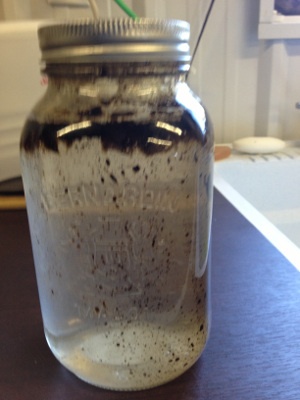
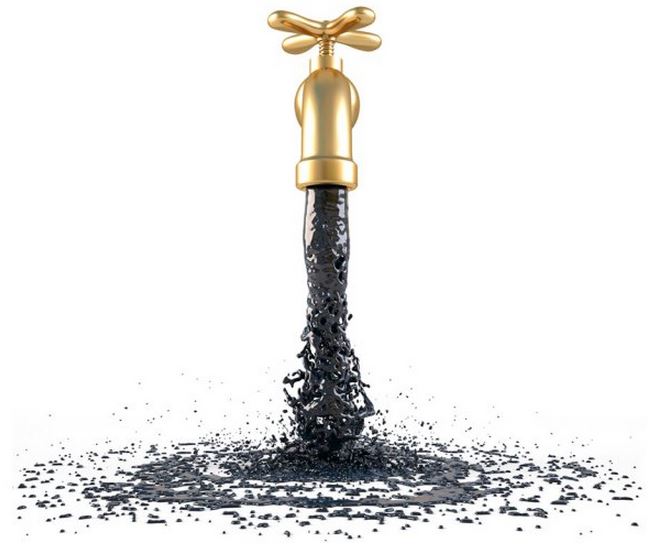
Ronalie and Shawn Campbell’s frac’d water (courtesy Encana/Ovintiv):


